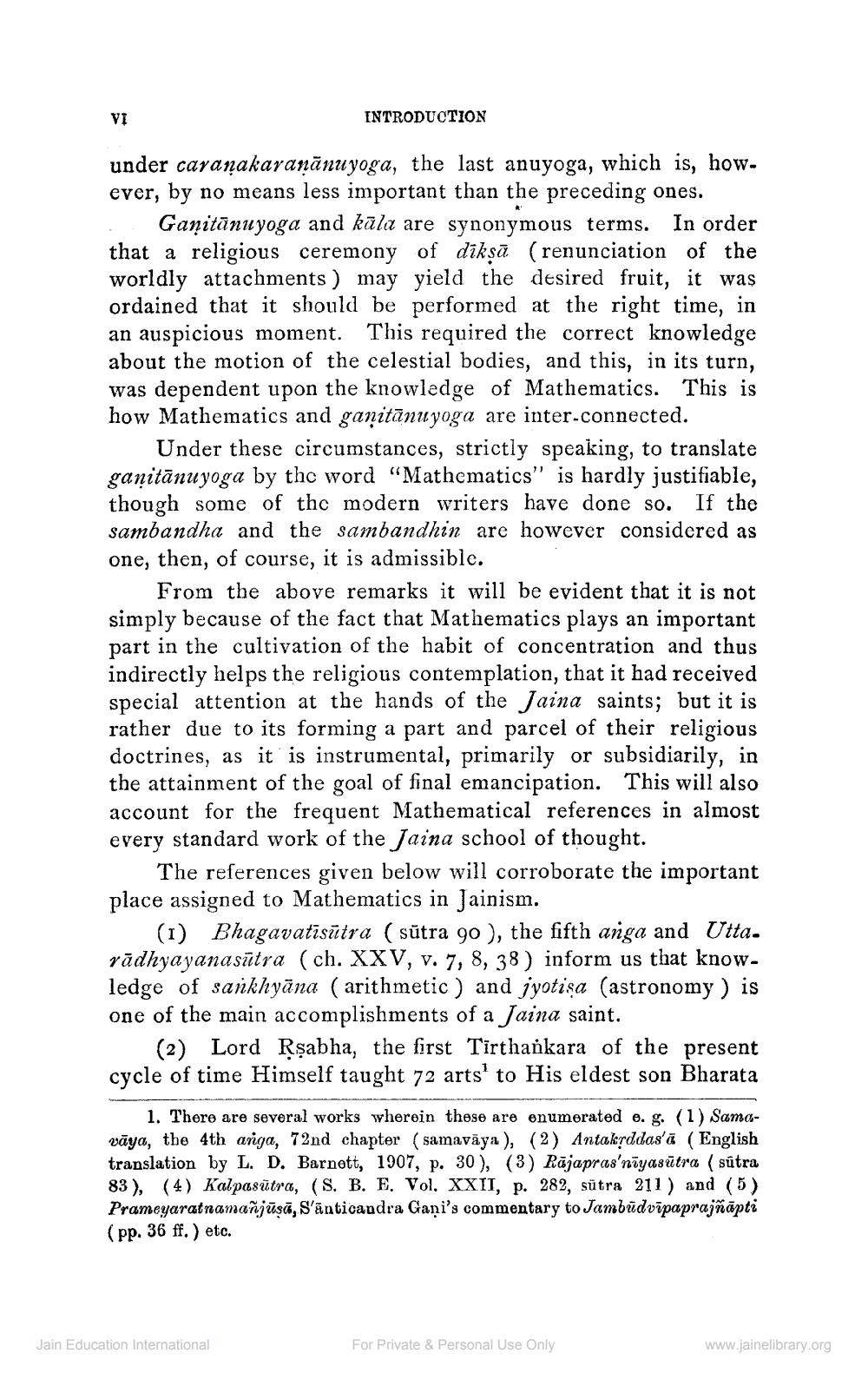________________
VI
INTRODUCTION
under caraṇakaranānuyoga, the last anuyoga, which is, however, by no means less important than the preceding ones.
Ganitānuyoga and kāla are synonymous terms. In order that a religious ceremony of dīksā (renunciation of the worldly attachments ) may yield the desired fruit, it was ordained that it should be performed at the right time, in an auspicious moment. This required the correct knowledge about the motion of the celestial bodies, and this, in its turn, was dependent upon the knowledge of Mathematics. This is how Mathematics and ganitānuyoga are inter-connected.
Under these circumstances, strictly speaking, to translate ganitānuyoga by thc word "Mathematics" is hardly justifiable, though some of the modern writers have done so. If the sambandha and the sambandhin are however considered as one, then, of course, it is admissible. .
From the above remarks it will be evident that it is not simply because of the fact that Mathematics plays an important part in the cultivation of the habit of concentration and thus indirectly helps the religious contemplation, that it had received special attention at the hands of the Jaina saints; but it is rather due to its forming a part and parcel of their religious doctrines, as it is instrumental, primarily or subsidiarily, in the attainment of the goal of final emancipation. This will also account for the frequent Mathematical references in almost every standard work of the Jaina school of thought.
The references given below will corroborate the important place assigned to Mathematics in Jainism.
(1) Bhagavatīsūtra ( sūtra 90 ), the fifth anga and Utta. rādhyayanasūtra (ch. XXV, v. 7, 8, 38) inform us that knowledge of sankhyāna ( arithmetic ) and jyotişa (astronomy ) is one of the main accomplishments of a Jaina saint.
(2) Lord Rşabha, the first Tīrthařkara of the present cycle of time Himself taught 72 arts' to His eldest son Bharata
1. There are several works wherein these are enumerated o. g. (1) Samavāya, the 4th anga, 72nd chapter (samavāya), (2) Antakyddas'a (English translation by L. D. Barnett, 1907, p. 30), (3) Rājapras'nīyasūtra (sútra 83), (4) Kalpasūtra, (S. B. E. Vol. XXII, p. 282, sūtra 211 ) and (5) Prameyaratnamañjūsā, S'anticandra Gani's commentary to Jambūdvīpaprajñāpti (pp. 36 ff.) etc.
Jain Education International
For Private & Personal Use Only
www.jainelibrary.org




